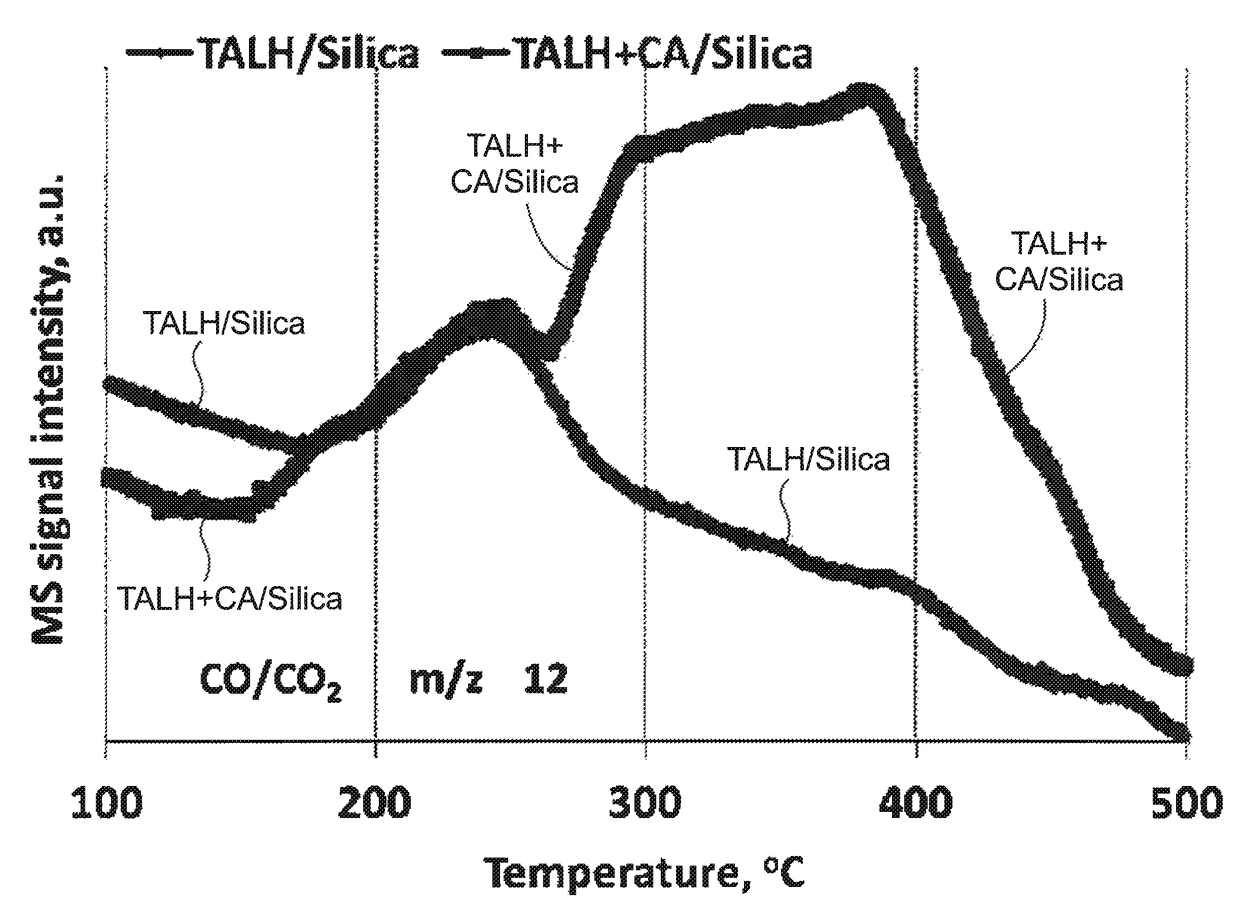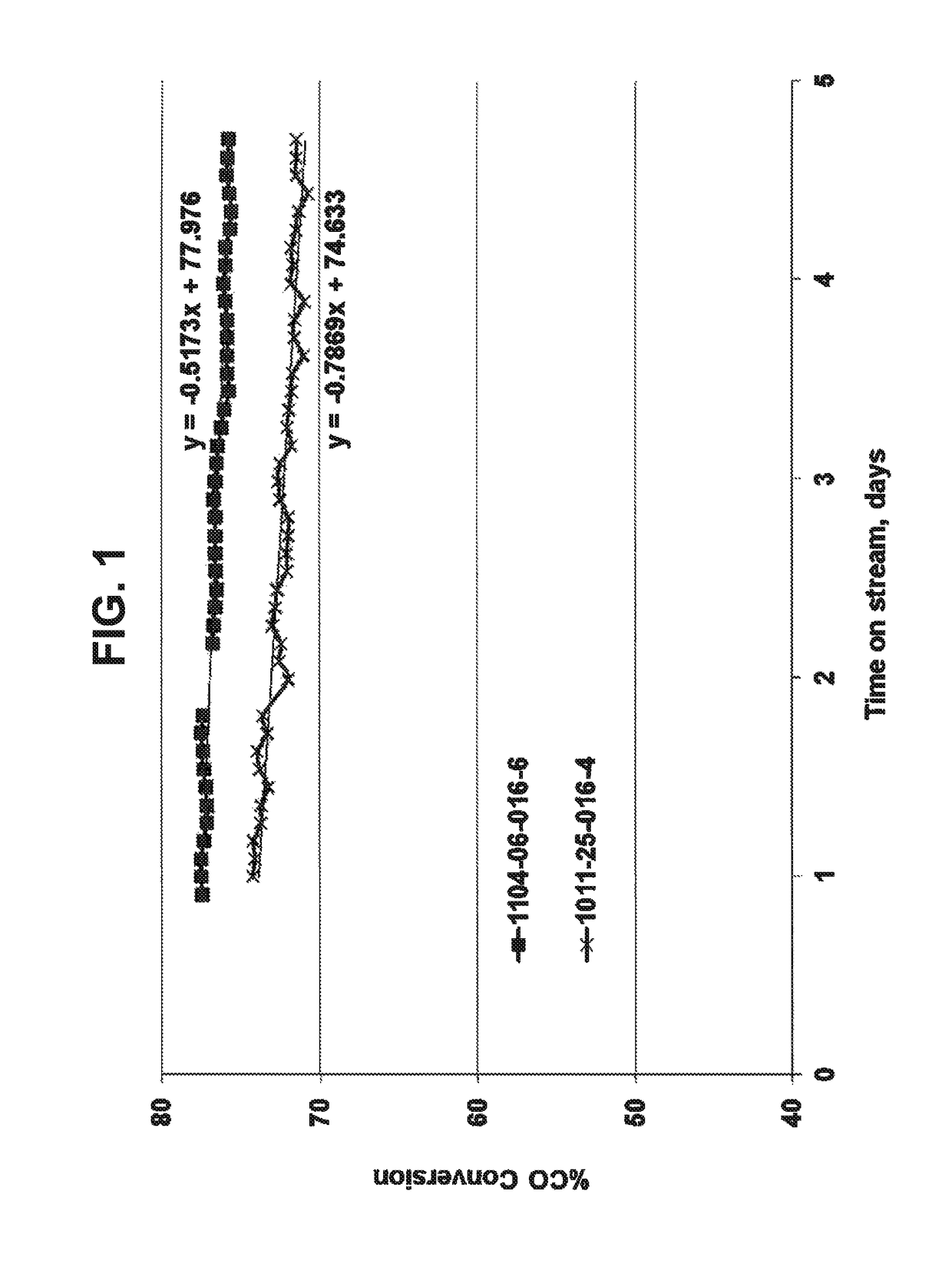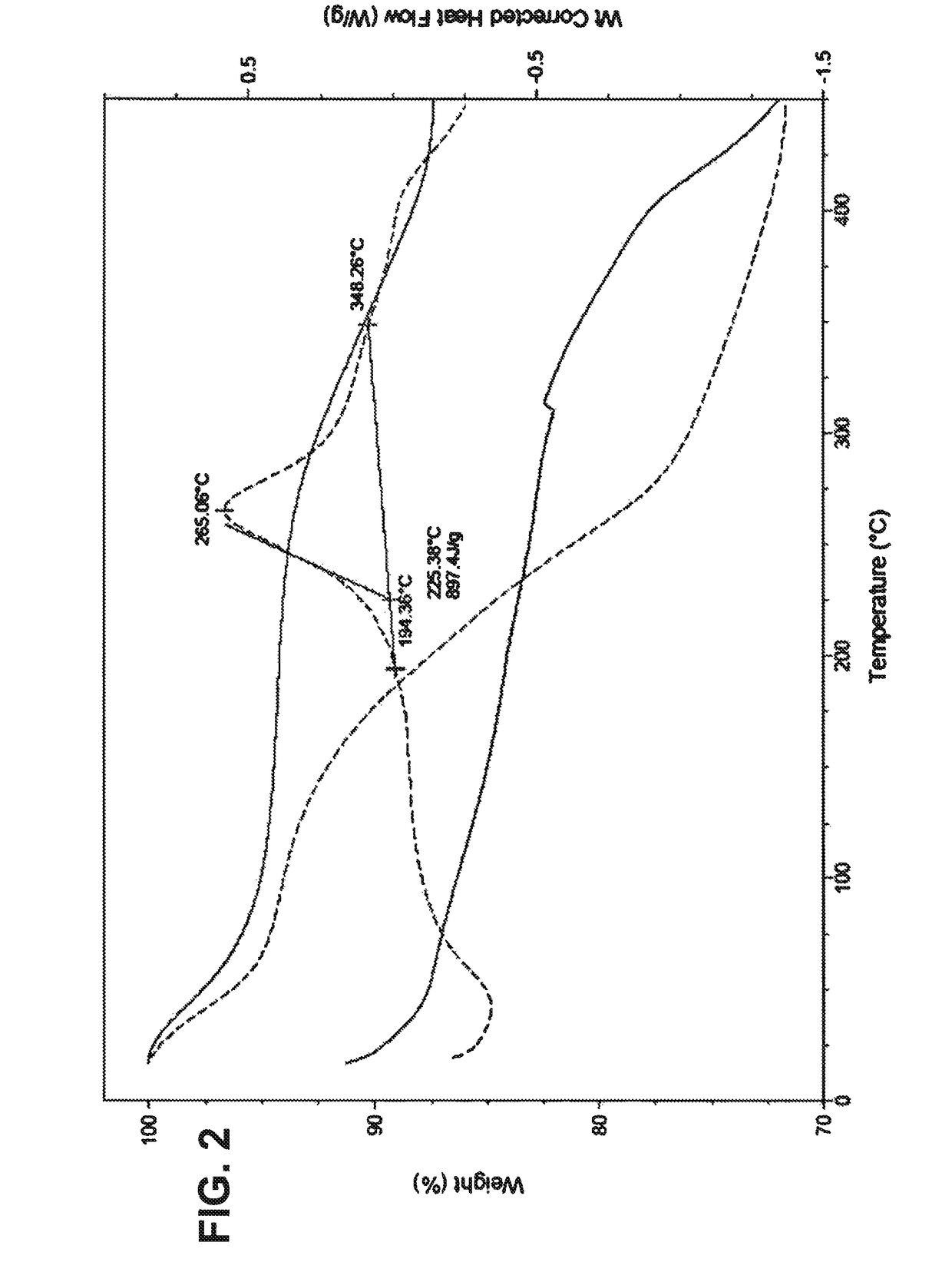Treating of catalyst carrier, fischer-tropsch catalysts and method of preparation thereof
a catalyst carrier and catalyst technology, applied in the direction of catalyst activation/preparation, metal/metal-oxide/metal-hydroxide catalyst, liquid hydrocarbon mixture production, etc., can solve the problem of lowering manufacturing costs
- Summary
- Abstract
- Description
- Claims
- Application Information
AI Technical Summary
Benefits of technology
Problems solved by technology
Method used
Image
Examples
example 1
(OCN11-027)
[0162]A comparison between a catalyst comprising a titania-modified silica support manufactured using an alkoxide method and a catalyst comprising a titania-modified silica support manufactured using the aqueous method of the present invention was carried out.
Synthesis of Modified Catalyst Support Using Alkoxide Method (Comparative Support A)
[0163]Silica bare catalyst support material (Grace Davison, SG432 180 to 300 μm particle size) was dried at 100° C. for 2 hours and allowed to cool to room temperature before impregnation. The impregnation solution was made by mixing 58.7 g of titanium isopropoxide with 60 ml of isopropanol, giving a solution volume of approximately 120 ml. 84 g of silica (weight determined after drying) was impregnated by spraying with the impregnation solution. Following impregnation, the modified catalyst support was dried at a temperature that increased at a ramp rate of 2° C. / min up to 100° C. The temperature was held at 100° C. for 10 hours.
[016...
example 2
The Effect of the Carboxylic Acid on Supports (OCIN11-032)
[0189]A comparison between a modified catalyst support which was modified using an aqueous solution comprising a carboxylic acid (i.e. the method of the present invention, support D) and one which was modified using an aqueous solution which did not comprise a carboxylic acid was carried out as follows (i.e. a comparative method, support C).
Synthesis of Modified Catalyst Support Using Comparative Aqueous Method (Support C)
[0190]Silica bare catalyst support material (Grace Davison SG432 / LC150, 180 to 300 μm) was dried at 100° C. for 2 hours and allowed to cool to room temperature before impregnation. The impregnation solution was made by adding water to 118 g (97 ml) of titanium (IV) bis(ammonium lactate)dihydroxide solution (TALH) to make the required volume for impregnation, which was about 130 to 135 ml. 84 g of silica was impregnated by spraying with the impregnation solution. Following impregnation, the modified catalyst ...
example 3
The Effect of the Carboxylic Acid on Deactivation Rate of Catalysts (OCIN11-032)
[0201]Fischer-Tropsch catalysts were prepared using modified catalyst supports C and D discussed in Example 2.
[0202]Catalyst C was made in the same way as catalyst A described in Example 1, except that modified catalyst support C was used in place of modified catalyst support A.
[0203]Catalyst D was made in the same way as catalyst B described in Example 1, except that modified catalyst support D was used in place of modified catalyst support B.
[0204]The catalysts C and D were each tested for Fischer-Tropsch synthesis performance. The catalyst (0.129 ml) diluted with SiC (2.184 ml) was loaded in a Spider reactor (L / D 31 cm) and reduced using pure hydrogen at 400° C. for 120 minutes at Gas Hourly Space Velocity (GHSV)=15 000 per hour. The temperature was increased from room temperature to 400° C. at 1° C. / min. After the reduction, the reactor was cooled to 165° C. and the gas was switched from hydrogen to ...
PUM
| Property | Measurement | Unit |
|---|---|---|
| temperature | aaaaa | aaaaa |
| solubility | aaaaa | aaaaa |
| weight ratio | aaaaa | aaaaa |
Abstract
Description
Claims
Application Information
 Login to View More
Login to View More - R&D
- Intellectual Property
- Life Sciences
- Materials
- Tech Scout
- Unparalleled Data Quality
- Higher Quality Content
- 60% Fewer Hallucinations
Browse by: Latest US Patents, China's latest patents, Technical Efficacy Thesaurus, Application Domain, Technology Topic, Popular Technical Reports.
© 2025 PatSnap. All rights reserved.Legal|Privacy policy|Modern Slavery Act Transparency Statement|Sitemap|About US| Contact US: help@patsnap.com



